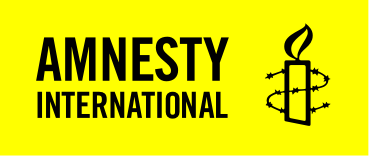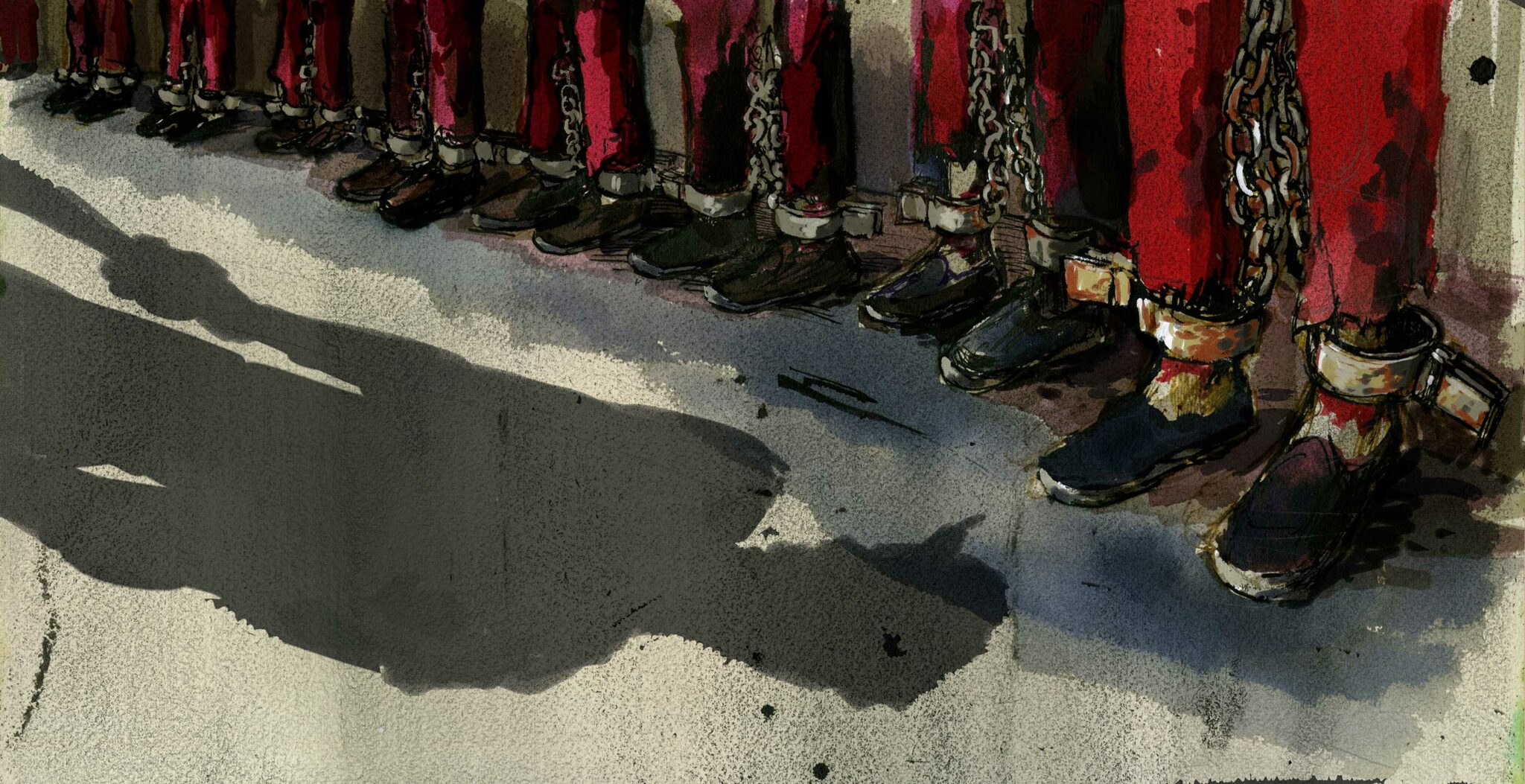Torture and other ill-treatment under international law
States have a legal obligation to treat people in detention humanely and with dignity. [[[See Article 10(1) of the ICCPR; UN General Assembly, Basic Principles for the Treatment of Prisoners : resolution / adopted by the General Assembly, 28 March 1991, A/RES/45/111 →]]] In addition, under international law, torture and other cruel, inhuman, or degrading treatment or punishment are absolutely prohibited and cannot be justified under any circumstances whatsoever. The prohibition, enshrined in Article 5 of the Universal Declaration of Human Rights and Article 7 of the ICCPR, among others, has become a rule of customary international law, which is binding on states even if they have not ratified the relevant human rights treaties. It is also a peremptory norm, a jus cogens rule, with no reservations or derogations permitted. [[[Amnesty International, Combating torture and other ill-treatment: a manual for action (Index: POL 30/4036/2016), pp. 54-61 →]]] It is not enough to simply prohibit and criminalize torture and, where appropriate, other acts of ill-treatment under national law; states must take a range of measures to protect people from, and prevent, these forms of abuse. [[[Amnesty International, Combating torture and other ill-treatment: a manual for action (Index: POL 30/4036/2016), Chapter 3 →]]] In certain circumstances, the crime of torture amounts to a crime against humanity (see Chapter 7).
The UN Convention against Torture and Other Cruel, Inhuman or Degrading Treatment or Punishment (CAT), which binds China legally as a state party, is the primary UN treaty focused solely on prohibiting, preventing, and combating torture and other ill-treatment. [[[Unlike torture, “cruel, inhuman or degrading treatment or punishment” has not been defined in international treaties. This phrase originated in the Universal Declaration of Human Rights and was incorporated unchanged into the CAT. In approaching the question of what distinguishes such ill-treatment from torture, Amnesty International is guided by the principle that “[t]he term ‘cruel, inhuman or degrading treatment or punishment’ should be interpreted so as to extend the widest possible protection against abuses”. Amnesty International considers, in line with much of the jurisprudence of international and regional human rights monitoring bodies, that cruel, inhuman, or degrading treatment or punishment may generally be described negatively in relation to torture; that is, as ill-treatment that “do[es] not amount to torture” because it lacks one or more of the key elements of the torture definition described above. An act or instance of ill-treatment would therefore constitute cruel, inhuman, or degrading treatment or punishment rather than torture if 1) it lacks the required intention, 2) it lacks the required purpose (or discrimination), or 3) the pain or suffering it causes is not considered “severe”; see Amnesty International, Combating torture and other ill-treatment: a manual for action (Index: POL 30/4036/2016), pp. 74 – 75.]]] Article 1 of the CAT defines torture as:
Any act by which severe pain or suffering, whether physical or mental, is intentionally inflicted on a person for such purposes as obtaining from him or a third person information or a confession, punishing him for an act he or a third person has committed or is suspected of having committed, or intimidating or coercing him or a third person, or for any reason based on discrimination of any kind, when such pain or suffering is inflicted by or at the instigation of or with the consent or acquiescence of a public official or other person acting in an official capacity. It does not include pain or suffering arising only from, inherent in or incidental to lawful sanctions.” [[[UN General Assembly, Convention Against Torture and Other Cruel, Inhuman or Degrading Treatment or Punishment, 10 December 1984, available at: → ]]]
Psychological or mental harm can constitute torture just as much as the infliction of physical pain. Courts have recognized that there is no necessary physical element to torture. [[[See Hernan Reyes, International Review of the Red Cross, “The worst scars are in the mind: psychological torture,” September 2007 →]]] Psychological torture can include:
- isolation
- threats
- humiliation
- intimidation
- sleep or sensory deprivation
- deprivation of communication
- constant exposure to light
- a restrictive visiting schedule
- witnessing others being tortured
Attempts to destroy a detainee’s sense of self by removing control over their environment (that is, creating “learned helplessness”) is also torture.
The treatment of detainees is strictly regulated under international law. [[[In addition to the broad provisions contained in general human rights treaties, the UN and other intergovernmental organizations have developed comprehensive standards for conditions of detention over the years, the Nelson Mandela Rules and the Bangkok Rules.]]] The prohibition of torture and other ill-treatment is recognized to include the prohibition of corporal punishment under international human rights law. [[[Amnesty International, Combating torture and other ill-treatment: a manual for action (Index: POL 30/4036/2016), pp. 84 – 88 →]]] Force should be used in detention settings only when strictly necessary and proportionate to the legitimate objective to be achieved. [[[Amnesty International, Combating torture and other ill-treatment: a manual for action (Index: POL 30/4036/2016), Chapter 4.5 →]]]
Prohibited interrogation techniques include stress positions or restraining the victim in a highly uncomfortable position. [[[See 9 CAT Concluding Observations: USA, UN Doc.CAT/C/USA/CO/2 (2006) §24]]] Blindfolding and hooding should also be prohibited, as should prolonged sleep deprivation, threats (including threats of torture and death threats), using cold air to chill the detainee, electrocution, and beating. [[[See UN Special Rapporteur on torture, UN Doc. A/56/156 (2001) §39(f); CPT Standards, 12th General Report, CPT/Inf (2002) 15 §38]]] Other forms of coercion include interrogation techniques designed to offend personal, cultural, or religious sensitivities. [[[UN Mechanisms Joint Report on detainees at Guantánamo Bay, UN Doc. E/CN.4/2006/120 (2006) §60.]]] Prolonged incommunicado detention and secret detention violate the prohibition against torture and other ill-treatment and are therefore forms of prohibited coercion. [[[2 UN Mechanisms Joint Study on secret detention, UN Doc. A/HRC/13/42 (2010), §§27-28, 292(f)]]]
Other techniques that may violate the right of detainees to be free from ill-treatment include withholding clothing or hygiene products, permanently keeping lights on in the cell, and sensory deprivation. [[[Asencios Lindo et al v Peru (11.182).]]] Intentionally depriving someone of food, water, or medical attention can also amount to torture. [[[N. Rodley and M. Pollard, ‘Criminalisation of torture: state obligations under the United Nations Convention against Torture and Other Cruel, Inhuman or Degrading Treatment or Punishment’, European Human Rights Law Review (2006) p.120.]]]
Extracting “confessions” through torture or other ill-treatment is a serious human rights issue that must be addressed by bringing domestic legal restrictions on prevention and prohibition of torture into alignment with international law and standards, in particular the Convention against Torture. Statements obtained through torture or other coercive means may not be invoked as evidence in any proceedings, except against the person accused of torture as evidence that the statement was made.
The revised UN Standard Minimum Rules for the Treatment of Prisoners (the Nelson Mandela Rules) provide that permitted instruments of restraint should be used only as strictly necessary and proportionate to prevent harm to the individual being restrained or to others, or as necessary to prevent escape during transfer; they are not to be used for punishment. [[[The Nelson Mandela Rules, rules 43(2), 47; see also UN Committee against Torture, Observations on the UN Standard Minimum Rules, arts, 36 and 37 (“The use of restraints should be avoided or applied as a measure of last resort, when all other alternatives for control have failed and for the shortest possible time, with a view to minimizing their use in all establishments and, ultimately, abandoning them… Immobilization should only be used as a last resort to prevent the risk of harm to the individual or others”); Amnesty International, Combating torture and other ill-treatment: a manual for action (Index: POL 30/4036/2016), pp. 57 – 58. →; Robben Island Guidelines, 2008: →]]] The rules also prohibit the use of chains or irons and regulate the use of other restraints. [[[Rules 47, 48 of the Standard Minimum Rules.]]]
It is essential that detainees be kept in conditions that ensure their physical and mental well-being. They should not be kept in overcrowded conditions or subjected to extremes of heat or cold. They must have access to natural light and fresh air [[[The Nelson Mandela Rules, Rules 13, 14 and 23; CPT Standards, CPT/Inf/E (2002) 1 – Rev. 2015, p. 25, §30. →]]] and to exercise, recreational, religious, and other facilities. Rule 44 of the Mandela Rules defines solitary confinement as “the confinement of prisoners for 22 hours or more a day without meaningful human contact”. International standards and experts increasingly favour restriction or even elimination of solitary confinement, in particular as a punishment. [[[Amnesty International, Combating torture and other ill-treatment: a manual for action (Index: POL 30/4036/2016), Chapter 4.5.5 →]]] Depending on the specific reason for its application, conditions, length, effects, and other circumstances, solitary confinement can constitute torture or other ill-treatment. [[[Special Rapporteur on torture report, UN Doc. A/66/268 (2011) §80.]]]
Though China ratified the CAT in 1988, it has failed to bring domestic legislation in line with the obligations of the treaty. The Committee Against Torture, the UN expert body charged with overseeing the treaty’s implementation, has repeatedly raised concerns about a number of issues in China, including the following:
- arbitrary detention where there is a high probability of torture and other ill-treatment;
- torture and other ill-treatment of human rights defenders;
- lack of a definition of torture in domestic laws that accords with that of the CAT;
- failure to effectively exclude at trial evidence obtained through torture and other ill-treatment; and
- lack of independence of judges and lawyers. [[[Amnesty International, No End in Sight: Torture and Forced Confession in China, 2015 →]]]



